FIRST LOOK: Everything you need to know about the TaylorMade P7CB and P770 (2024) irons
Last updated:
Everything you need to know about the 2024 TaylorMade P7CB and P770 irons.
TaylorMade have been building a reputation among elite golfers for making some of the best irons available since introducing the P-Series family back in 2017. With the Carlsbad-based company now settled on two-year product life cycles, 2024 is the perfect time for the brand’s engineers and designers to reassess how the P7MB, P7MC, and P770 can better serve elite amateurs, club pros, and the company tour athletes. For this new generation of TaylorMade P7CB and P770 irons, TaylorMade’s boffins have come up with a new Metal Matrix Composite material that allows forgiveness to be nudged up, so golfers can expect greater shot-to-shot on-course consistency.
I caught up with TaylorMade’s Matt Bovee – Global Category Director, Product Creation Irons to find out how they’ve done it.
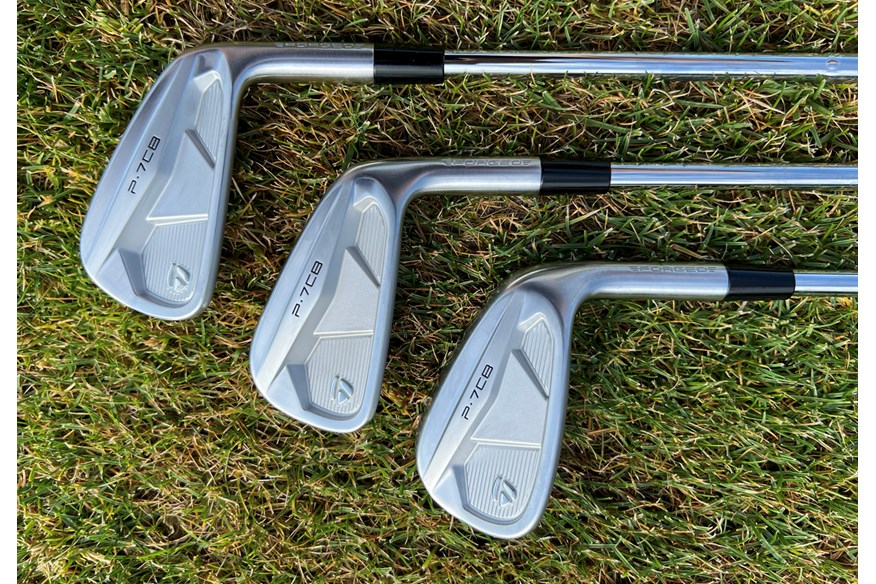
Everything you need to know about the TaylorMade P7CB iron (2024)
The new model has already won out on tour.
Equipment fans will already know World #2 Rory McIlroy has played and won (the Wells Fargo Championship) with a prototype TaylorMade P7CB long iron this season. TaylorMade have tried to keep a lid on this players’ iron launch ever since. Tommy Fleetwood and Collin Morikawa have been spotted testing the new design too, as has women’s world #1 Nelly Korda. This hot new model is getting plenty of tour adoption even though most players are mid-way through their season.
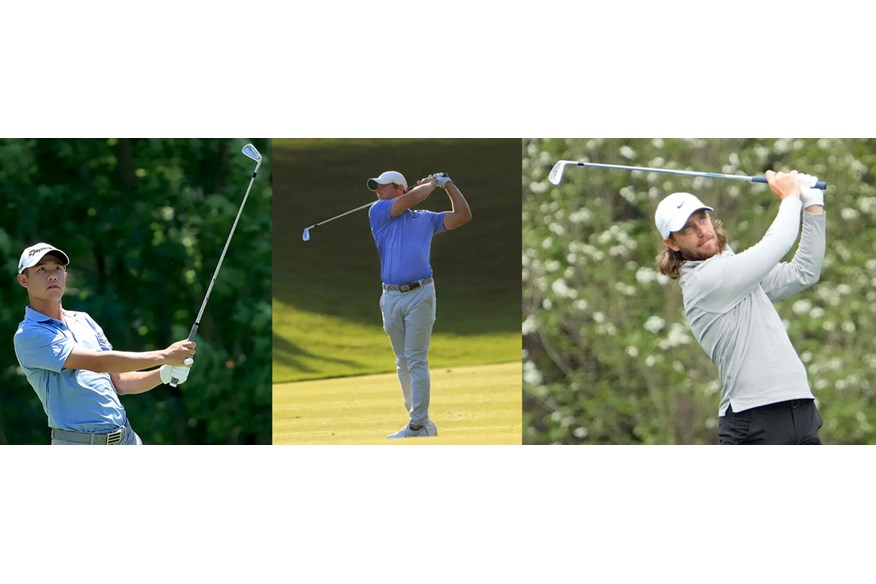
The players’ iron market is a big opportunity for TaylorMade.
Nobody would argue that TaylorMade have not bossed the Players’ Distance Iron category with the brilliant P790 since its introduction in 2017, especially as the franchise has always been revered as one of the best players’ distance irons available. With such a strong foothold among decent golfers the company believes it’s now perfectly possible to reach similar heights with their best players’ irons too.
The company thinks there was a big gap between the previous P7MC (Muscle Cavity), which was designed with their elite tour staff in mind, and the hollow body modern players’ iron, the P770. The new P7CB will fill this void as it’s a more forgiving and playable players’ iron option that sits neatly between the old MC and P770.
What’s different about the new TaylorMade P7CB iron?
Players’ irons are incredibly tough to makeover as decent players often have very fixed views around what they like to see and feel from their equipment, and anything remotely different from the norm is quickly written off as unplayable.
To bring a degree of flexibility to their new designs TaylorMade have employed a clever new Metal Matrix Composite material (MMC) which is 7 times lighter than steel. It allows the removal and repositioning of weight through CNC-milled pockets in the sole.
The move means dense tungsten can be inserted close to the sole to lower the center of gravity which delivers more spin, more shot height, and additional forgiveness without losing distance. Rumour has it the idea is so efficient it took Rory McIlroy just four shots to decide the model was going straight into his bag, after a trip to the Kingdom in March.
Where the lightweight MMC caps the cavity containing the tungsten in the sole of the CB long irons, it’s also great for removing mass from the short iron soles, which frees up weight for additional perimeter weighting. So good is the tungsten and MMC combination TaylorMade says they have been able to create a constant center of gravity set, which is rare for a solid forged iron body set, a setup that makes for a very consistent set.
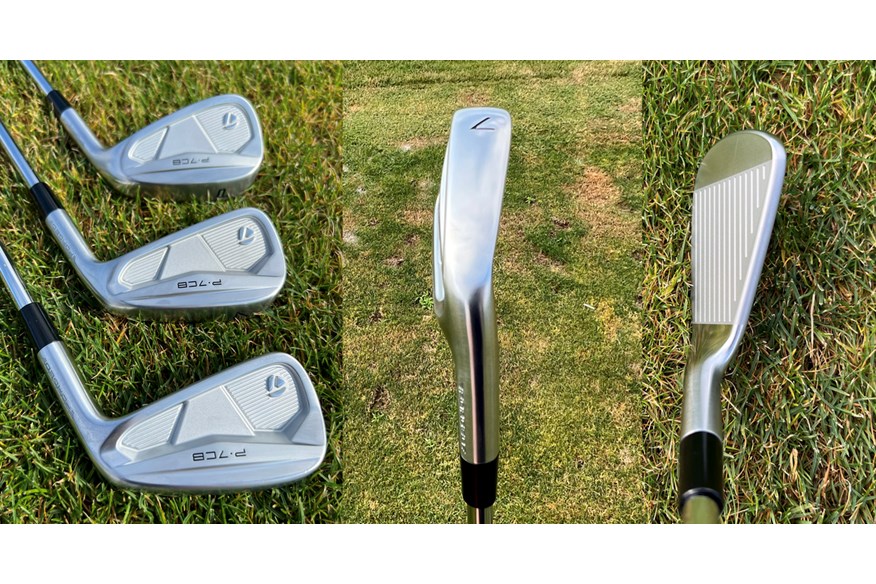
The CB is not a traditional one-piece forged iron.
Like a lot of premium forged irons, the CB is forged five times to squeeze the model into shape. TaylorMade uses a 2000-ton press which is 2 to 3 times heavier than most of the competition, they do so as the extra mass aligns the grain more closely for excellent feedback and feel. After four strikes the tungsten weight and MMC are inserted for the last hit which bonds everything together in this Co-Forged model.
Each head is constructed from 1025C steel, the faces are CNC Milled to deliver the precision decent players desire and there’s a super sleek satin finish just like previous popular TP iron models.
Consistency is the story here
As the target golfers of the P7CB are elite amateurs and club pros the goal has been upping shot-to-shot consistency, as that’s what the brand’s test team has asked for.
Thanks to a 2mm wider sole (than the previous P7MC) this model boasts more playability, but don’t think of forgiveness as making shots more accurate from left to right. The intention is to group shots more tightly when shots don’t hit the center of the bat, so the difference in carry distance and spin between centered strikes and slight mishits is essentially neutralized.
A thick stable face and additional center weight pad offer up excellent feel and feedback too.
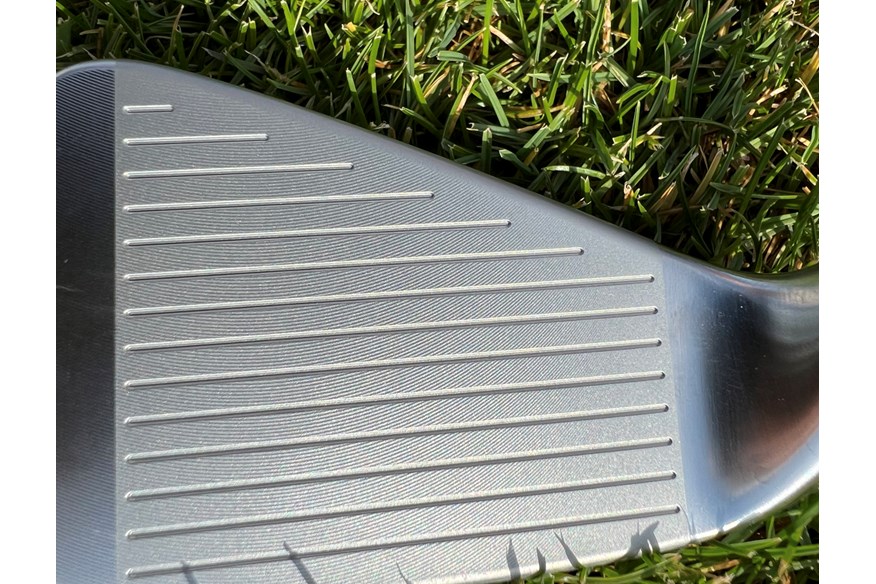
Details: TaylorMade P7CB iron
RRP: £179 per iron
Stock Shaft: Dynamic Gold Mid 115
Stock grips: Golf Pride Z-Grip +2
Category: Players’ Iron
Forgiveness rating: 2/5
7-iron loft: 33°
TM Handicap guide: +5 – 5
Matt Bovee – TaylorMade Global Category Director, Product Creation Irons on the P7CB and P770
SD: Is the P7CB the first TaylorMade iron co-forged from more than one material?
MB: It isn’t, the P7TW and P750 both have tungsten co-forged inside, but the CB is the first model to utilize the new Metal Matrix Composite (MMC) material. We can control the CG and forgiveness using MMC, so where the CG of long irons usually gets higher as the mass reduces and the sole widths get narrower, we’ve got the CG flat across the entire set, which gives a lovely consistent feel. Golfers get increased launch from the longer irons, which is exactly why tour players are changing into them so quickly.
Even the best players in the world want a long iron that’s a little easier to play, and with the CB they see this repeatable performance. Players are seeing very similar spin rates, and carry distance with a little extra height and stopping power and greater consistency between on and off-center hits.
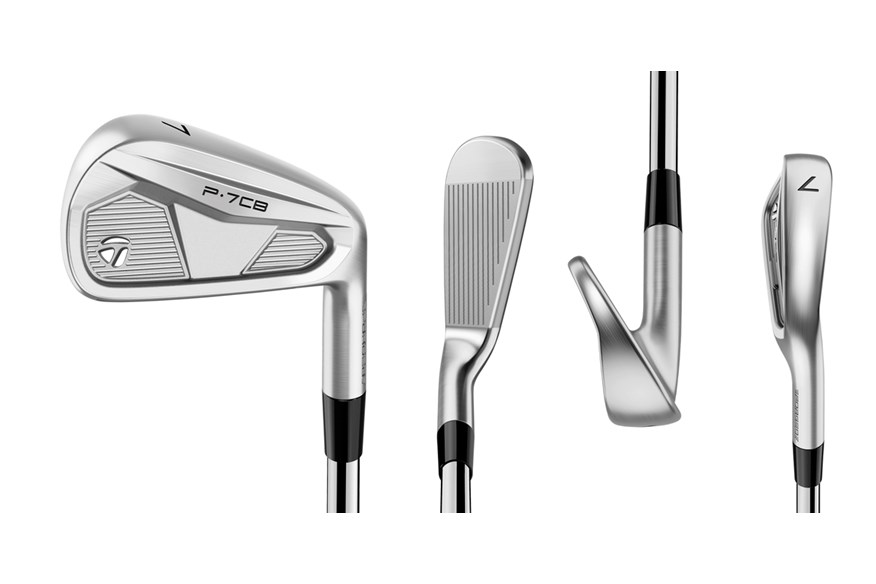
SD: How many of the CB irons contain tungsten weighting?
MB: There’s Co-forged tungsten in the 3 – 6 iron but the MMC material runs from 3 -PW. Where we use the MMC in the long irons to help maintain a lower CG the material also allows us to remove steel from the soles of the shorter irons, making them more forgiving as additional mass can be repositioned around the perimeter. Greater consistency between shots is exactly what club pros, elite amateurs, and tour players have been asking us for.
SD: What differences can golfers expect to see in performance between the P7CB and P770?
MB: Golfers should expect meaningful differences depending on which iron you’re looking at within each set. The short irons will perform similarly, but the P770 has a slightly wider sole, and a slightly longer blade length which makes them fractionally more forgiving.
When you get into the mid and longer irons the P770 will give a little more carry distance. It’s a little bigger, with a slightly wider sole and a longer blade length, typically expect 4 – 6 yards more from playing the P770.
We’ve worked really hard to make the P770 feel better, which now opens both models up to creating brilliant combo sets, especially as the sole widths are more closely matched than they have been before.
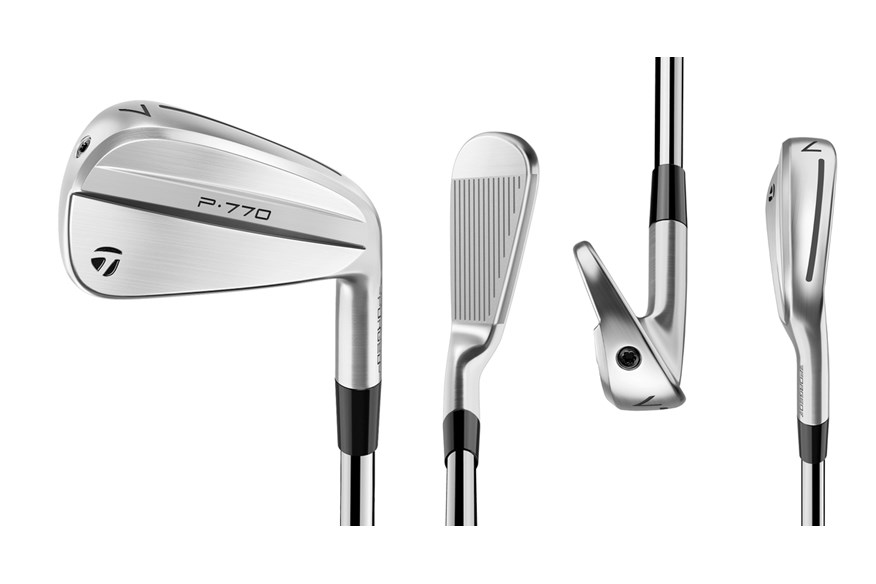
SD: Are hollow body constructions becoming the norm for the players’ iron arena?
MB: Lots of players in this market are sliding towards hollow body constructions for sure. At TaylorMade, we think about the P770 as the modern-day players’ iron. It’s designed for 0 – 10 handicappers but we look at it from a slightly different perspective. We prioritize feel, we’ve added a little more spin for more control and we’re delivering more forgiveness.
The leading edge of the P770 sole geometry has been modified too, it now helps golfers get into the turf a little better, rather than bouncing off of it, so like the CB it will feel a little more consistent. The new P770 has a slightly narrower top edge. Visually it will fit the eye of better golfers more easily, decent players will appreciate this alongside the extra forgiveness, control, and consistency.
SD: Does the new P770 address the consistency issues some golfers get with hollow body irons?
MB: Consistency has been the one criticism of hollow body irons, but we’re constantly learning more about them and we know the players who use them desire consistency. By increasing stability and upping forgiveness we have effectively made the sweetspot a little larger which will translate to getting more consistent numbers between shots on a more regular basis.
If you compare the original P790 from 2017 with the current 2023 P790 they are very different in terms of where the sweetspot is positioned and the size of it. Hands down the consistency of the new 2024 P770 is better than it’s ever been.
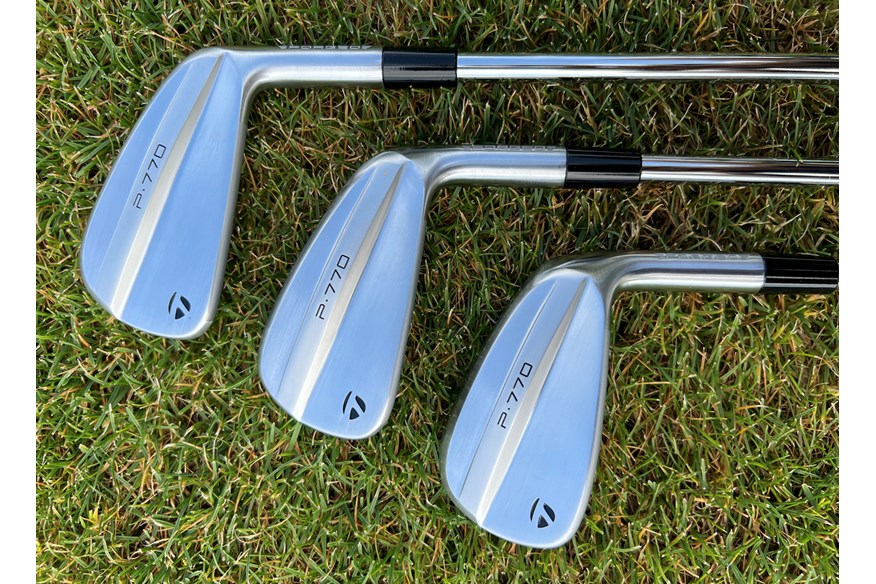
Everything you need to know about the TaylorMade P770 iron (2024)
More evolution than revolution
Where the P7CB is a brand-new iron for TaylorMade in 2024 the P770 is very much a 3rd generation update. Expect a new blade-like style, a familiar forged 4140 face, and a hollow body construction. Additional focus has also been heaped on upping feel, ironing out shot-to-shot consistency, and improving stability.
Who is the TaylorMade P770 designed for?
Irons are always designed with different types of players in mind, so where the P7CB is designed for +5 – 5 handicappers the P770 is much more likely to do a job for 0 – 10 digit players. See the P790 as a good option for 5 -15 handicaps and you’ll be thinking along exactly the right line.
You should expect this model to deliver additional ball speed over the P7CB but less than the P790. With mid-high launch tendencies (where the CB is low and P790 is high) and moderate to high spin (where the CB is high and the P790 is mid) the P770 is very much the modern-day players’ iron.
A model that will likely add a few yards of carry distance and extra forgiveness over a traditional solid body forged players’ iron.
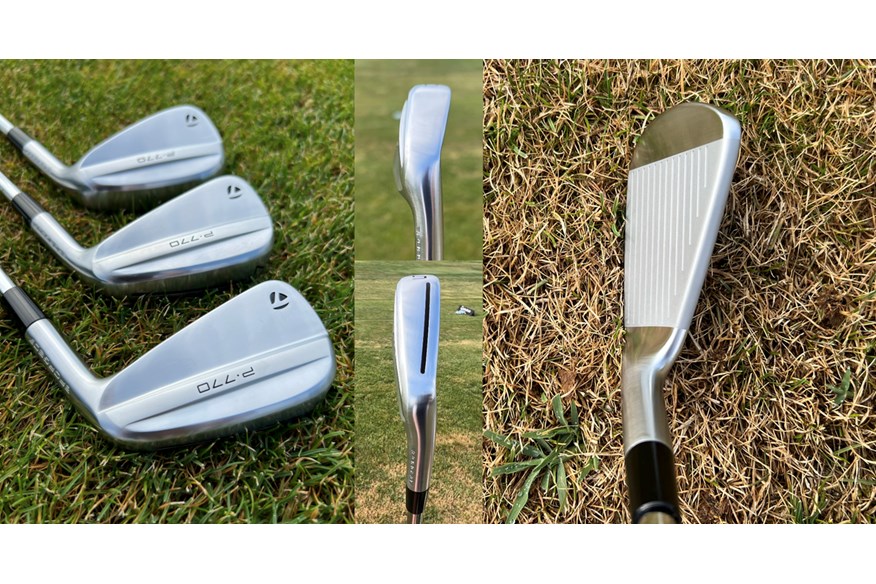
What are the advantages of a modern hollow body construction?
Hollow body constructions have been the big story in irons since 2015 when PXG first arrived on the scene. The boast has always been by removing mass from the center of the head it’s possible to up forgiveness and team a sleek-looking players’ profile with nigh-on-game improver iron levels of forgiveness. A thinner, more flexible face also helps boost ball speed for extra distance too.
Hollow body constructions appear most frequently within players’ distance irons, but models like the P770, Callaway Apex 24 Pro, and PXG 0317 T utilize the tech to offer options in the players’ iron category too.
With a 7-iron loft of 33°, where players’ distance irons are usually closer to 30°, make no mistake the P770 is a modern-day players’ iron. If you don’t like or trust hollow body constructions the solid body P7CB will be the better choice.
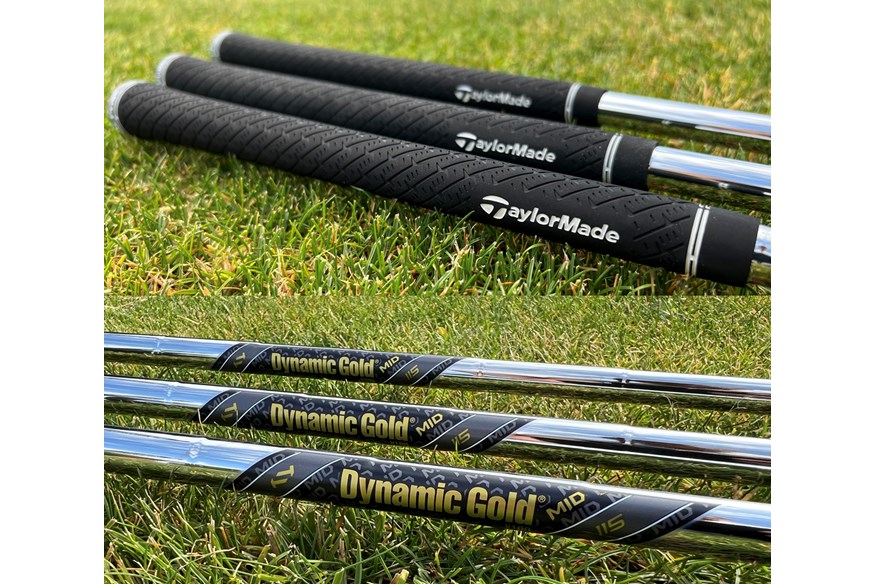
Details: TaylorMade P770 iron (2024)
RRP: £179 per iron
Stock Shaft: Dynamic Gold Mid 115
Stock grips: Golf Pride Z-Grip +2
Category: Players’ Iron
Forgiveness rating: 2-2.5/5
7-iron loft: 33°
READ NEXT: Best TaylorMade Irons
-
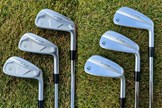 The TaylorMade P7CB and P770 irons
The TaylorMade P7CB and P770 irons
-
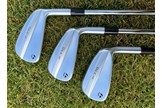 A close up of the back detailing of the TaylorMade P770 (2024) irons.
A close up of the back detailing of the TaylorMade P770 (2024) irons.
-
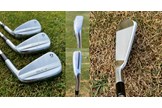 Two images to show the TaylorMade P770 (2024) iron at address, and the sole width.
Two images to show the TaylorMade P770 (2024) iron at address, and the sole width.
-
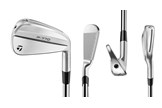 The TaylorMade P770 2024 iron head shape from every angle
The TaylorMade P770 2024 iron head shape from every angle
-
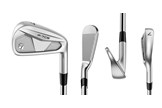 The TaylorMade P7CB iron from every angle
The TaylorMade P7CB iron from every angle
-
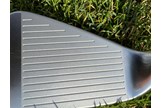 A close up of the CNC milled face and grooves on the TaylorMade P7CB iron.
A close up of the CNC milled face and grooves on the TaylorMade P7CB iron.
-
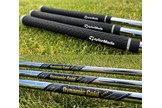 The stock shafts and grips in the TaylorMade P7CB and P770 2024 irons.
The stock shafts and grips in the TaylorMade P7CB and P770 2024 irons.
-
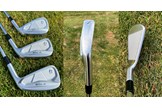 The TaylorMade P7CB iron detailing, at address and the sole width.
The TaylorMade P7CB iron detailing, at address and the sole width.
-
 Rory McIlroy, Tommy Fleetwood and Collin Morikawa the players who've used the TaylorMade P7CB irons.
Rory McIlroy, Tommy Fleetwood and Collin Morikawa the players who've used the TaylorMade P7CB irons.
-
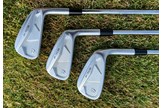 The back detailing of the TaylorMade P7CB 2024 irons
The back detailing of the TaylorMade P7CB 2024 irons